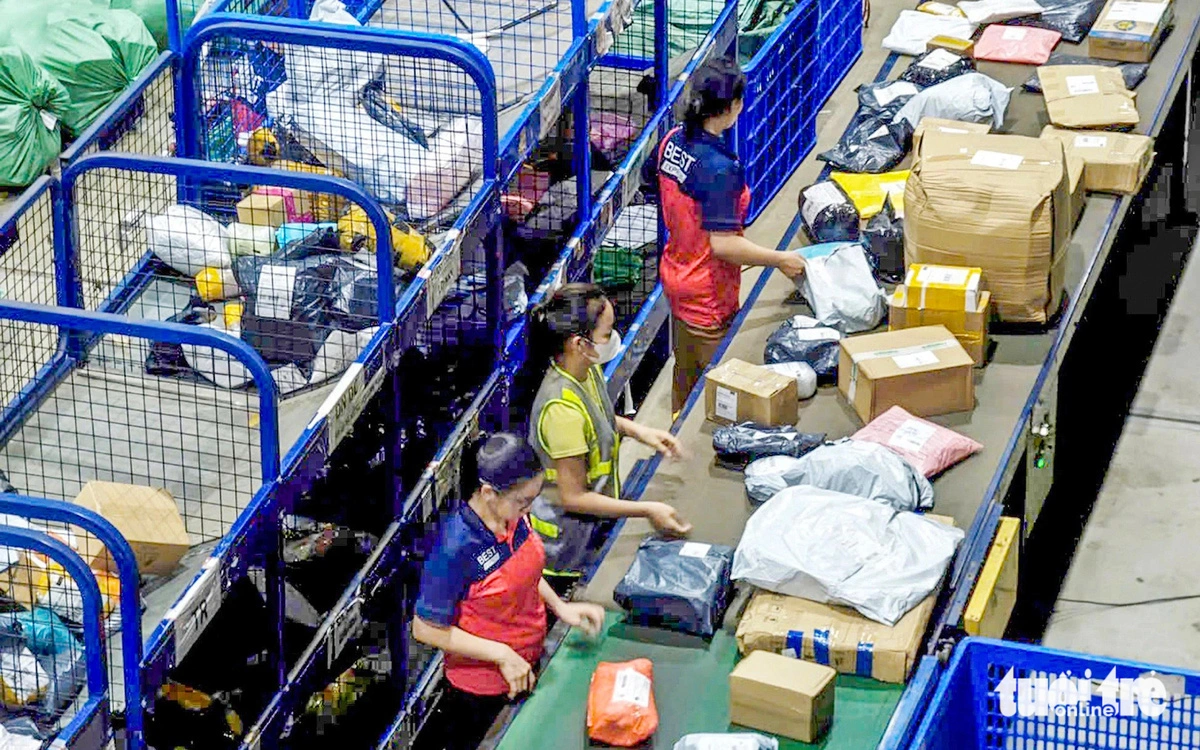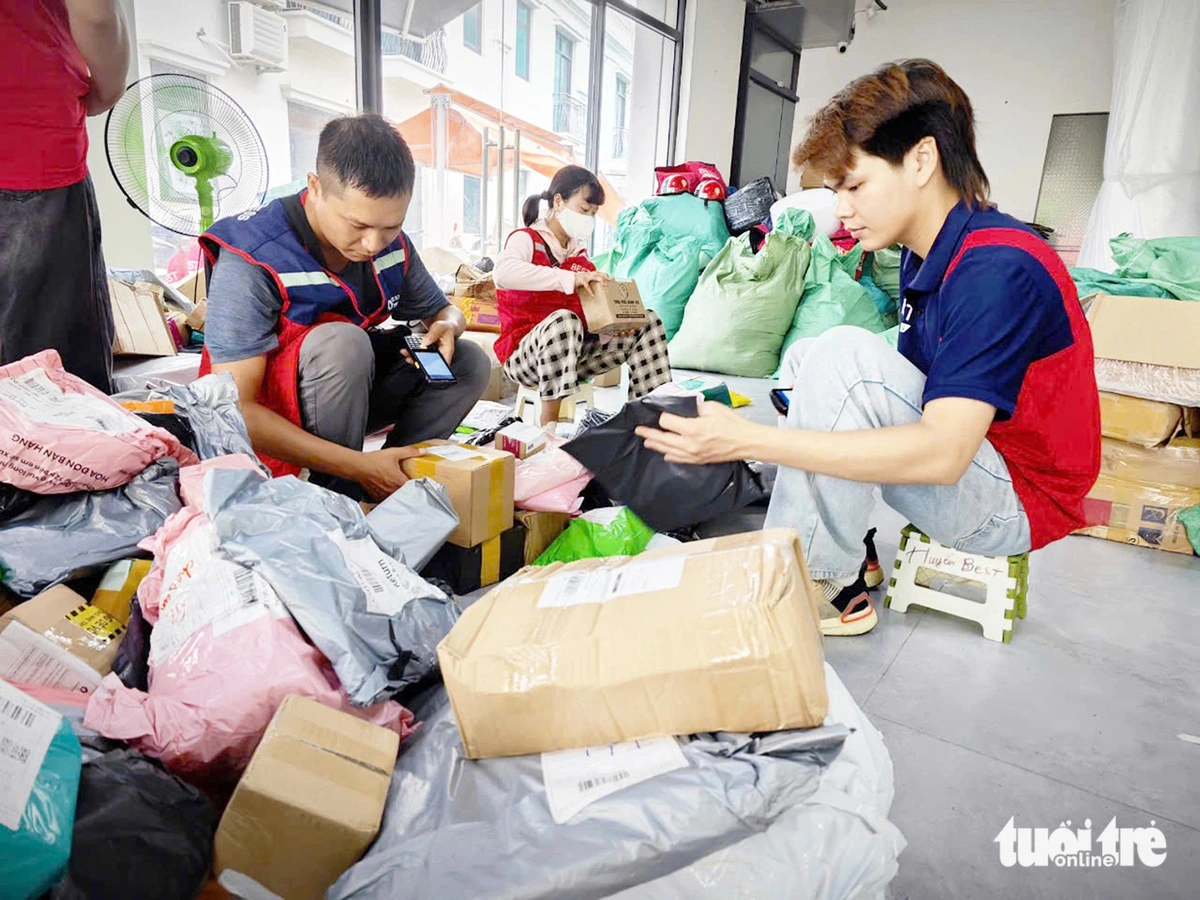Chinese e-commerce platforms are facilitating an influx of low-cost products into Vietnam, tormenting Vietnamese enterprises.
Chinese products sold in Vietnam via Temu, Taobao, and 1688 are challenging Vietnamese enterprises in terms of price, quality, and service.
If Vietnamese businesses cannot rise over this challenge, they may begin to fall behind.
Vietnamese consumers are turning to Chinese products due to their low cost.
At a 'VND19,000 [US$0.76] and below store' on Phan Van Tri Street in Go Vap District, Ho Chi Minh City, Duong Thuy, a local resident, said that she has trouble saying 'no' to such low prices.
Goods at the store, which include porcelain bowls, household appliances, and fashion accessories, are priced lower than similar Vietnamese items at local supermarkets thanks to cheap import costs when buying in bulk from China.
The influx of these low-cost Chinese commodities at such stores or on e-commerce platforms like Shopee, Lazada and TikTok Shop is starting to chip away at Vietnamese market shares.
Quynh Tran, a housewife in Ho Chi Minh City, said she had bought a Vietnamese kitchen appliance for VND300,000 ($12) plus a VND20,000 ($0.8) delivery fee.
Meanwhile, a similar appliance from China cost just VND180,000 ($7.2) and came with free delivery. With such a large price difference, buying Chinese products is a no-brainer for Tran.
A popular platform for buying cheap Chinese goods is Temu, which offers 90-day returns and promotional programs of up to 90 percent. The Temu website is also available in Vietnamese, making it especially attractive to Vietnamese consumers.
Most of the goods purchased on Temu are shipped from Guangzhou, China to Vietnam by road, allowing for delivery times of four to seven days. Comparatively, goods from Malaysia and the Philippines take five to 20 days to be given to Vietnamese customers.
Domestic production, retail suffocating
The domination of Chinese e-commerce platforms like Temu, Taobao, and 1688 has changed the Vietnamese market, creating more intense competition among local enterprises and international rivals.
Before Temu entered Vietnam, the market had been dominated by foreign e-commerce platforms Shopee, Lazada, and TikTok Shop. Fierce competition from these foreign enterprises has created significant difficulties for Vietnamese businesses.
Several local producers and retailers told Tuoi Tre (Youth) newspaper that competition in both price and strategy is intense between Vietnamese and Chinese e-commerce businesses.
If Vietnamese businesses do not learn to adapt, they will be completely pushed out of the market.
Nguyen Ngoc Luan, CEO of Meet More Vietnam Co. Ltd., a coffee producer in Cu Chi District, Ho Chi Minh City, said that his company is having trouble keeping up with competition from Chinese-originated goods, particularly due to their low costs and free delivery fees.
As a result, Vietnamese firms have been compelled to lower prices, thereby reducing their profit margins.
Many Chinese firms have tried to partner with local companies to sell Vietnamese goods in China, but the profits from these ventures are low once transport costs and commissions are taken into account.
Meanwhile, Chinese goods exported to Vietnam benefit from subsidies provided by local Chinese governments and are supported by strong logistics and distribution networks, Luan noted.
Phuong, who runs a household business, imports products from China for distribution in Vietnam.
However, she struggles to compete with Chinese e-commerce giants like Shein, Taobao, and Temu.
E-commerce expert Le Tuan noted that while Vietnamese customers may benefit from increased competition, local businesses are likely to face significant challenges competing with their Chinese counterparts.
|
|
| Employees classify Chinese goods for delivery at a post office in Vietnam. Photo: Cong Trung / Tuoi Tre |
International expansion
According to local retailers, Chinese products have inundated the Vietnamese market thanks to warehouses built near the border with Vietnam, efficient delivery services, and low costs.
Nguyen Xuan Hung, head of the E-Commerce Logistics Department under the Vietnam Logistics Business Association, said Vietnamese enterprises should focus on product quality, after-sales services, and logistic systems to reduce costs and enhance competitiveness against Chinese goods.
One e-commerce expert suggested that Vietnam invest in warehouses exclusively for e-commerce platforms as a hedge against existing storage which serves large manufacturers instead of e-commerce businesses, thus weakening order-handling capabilities and increasing logistic costs.
“Improving Vietnam’s logistics infrastructure will optimize operation processes, thereby improving business efficiency,” the expert explained.
Vietnamese firms should also take advantage of brands and product quality in order to gain trust from local consumers.
It is necessary to have a legal framework to protect domestic production and retail, the expert noted.
According to Luan, CEO of Meet More Vietnam Co. Ltd., Vietnamese enterprises should diversify export markets, targeting potential markets like India, Southeast Asia, Europe, and the U.S. in order to minimize risks and develop sustainably.
Who is Temu?
Temu has grown to be such a large source of low-cost goods with the ability to offer fast delivery services.
The platform takes a percentage of sales costs for marketing, transport, and retail. Goods, after arriving in Vietnam, are then delivered to Vietnamese consumers by domestic transport firms, such as Ninja Van and Best Express.
When Singapore-headquartered venture outfit Momentum Works released a report titled 'Who is Temu?' in February 2023, many consumers knew little about the business. Now, less than two years later, Temu is present in 78 countries and territories.
The fully managed consignment model pioneered by Temu has been imitated by rivals, including AliExpress, Lazada, Shopee and Amazon. The model enables suppliers to negotiate prices with Temu and send goods to the latter’s warehouses.
Meanwhile, Temu takes charge of pricing, marketing, and after-sales services.
This model helps it better control its supply chain, including product quality and consumer experience.
Although Temu has yet to officially announce its entrance into the Vietnamese market, local consumers can download the Temu app, buy products, and make payments.
From nothing at the beginning of September 2022, Temu’s monthly gross merchandise value surged to some $4 billion in mid-2024.
Although PDD Holdings, Temu’s parent company, has yet to disclose its affiliate's financial position, some investors and analysts believe that the platform has reached or nearly reached the break-even point.
In the Vietnamese market, Shopee currently holds a 61-percent market share, followed by TikTok Shop with 24 percent and Lazada with 14 percent.
ike us on Facebook or follow us on Twitter to get the latest news about Vietnam!




















































